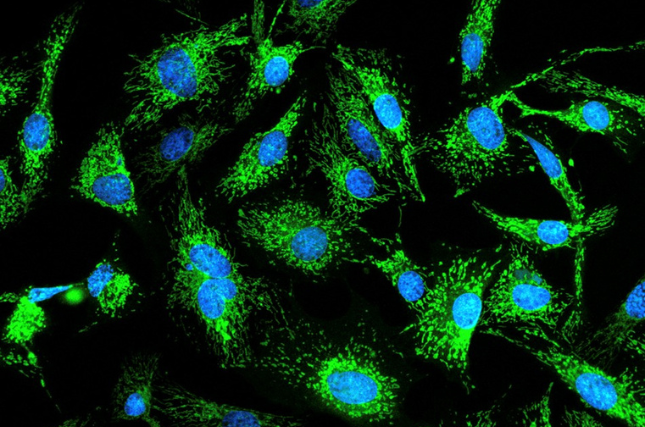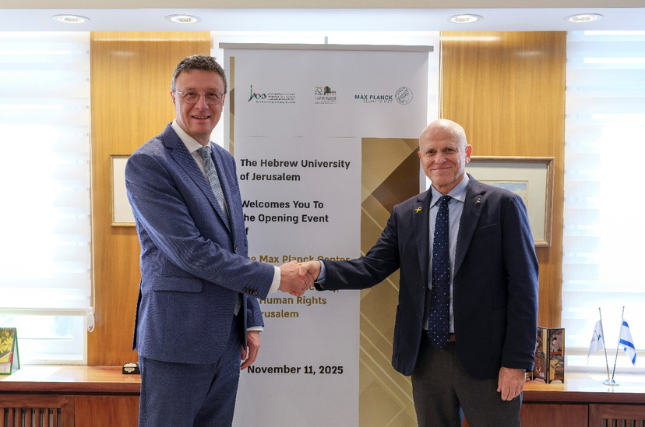
WHEN CLEVELAND CLINIC first entered discussions with Hebrew University about a collaboration in nanoscience in 2016, I must admit I did not have extremely high expectations.
Although I was well aware of the University’s excellent reputation, I was mindful of the long distance between the institutions, which typically doesn’t lend well to fruitful partnerships.
The task we faced was daunting: Combining forces, nearly 6,000 miles apart, to create and commercialize new therapies, technologies and drug-delivery systems. Using particles too small for the naked eye to see, our goal was to utilize molecular-level engineering to target medications to attack illnesses ranging from cancer and cardiovascular disease to neurological disorders such as Parkinson’s disease. No small order.
The Cleveland Clinic’s Biomedical Engineering Department at the time had a group of engineers and scientists working on a few key projects, but their portfolio expanded dramatically once they were introduced to counterparts at Hebrew University.
Together with Hadassah, the university operates one of the leading hospitals in Israel, and its researchers have won worldwide acclaim, including eight Nobel Prizes. Albert Einstein was a supporter at its founding a century ago. They have been hugely successful in bringing nanotechnologies to the global market.
That’s why Victor Cohn, a Cleveland philanthropist who supports both institutions, brought us to the table to explore what we could accomplish together. He returned from a trip to Israel with a vision to form a global nanotechnology initiative to help patients around the world. The marriage of these two nanotechnology programs form what is now known as the Center for Transformative Nanomedicine.
While the Cleveland Clinic has a rich history of healthcare innovations, at the time we were relatively young in the field of nanomedicine.
Yissum, Hebrew University’s technology transfer arm, has a team-based approach to commercialization that assists the technology inventors each step along the sometimes-long timeline from discovery through licensing. Their approach has resulted in dozens of start-up companies, and their products generate billions of dollars annually. One of their most famous successes was the chemotherapy drug Doxil, which was invented by HUJI professor Chezy Barenholz and has prolonged the lives of millions of patients.
So despite my initial skepticism about logistics, I was truly amazed by the Hebrew University team’s willingness to collaborate and their commitment to making the partnership work—taking frequent late night calls, visiting Cleveland, and graciously hosting my team in Israel.
The research conducted by the Center for Transformative Nanomedicine has resulted in potential treatments including: loading nanoparticles with chemotherapy drugs to deliver them to precise tumor targets, reducing collateral damage to healthy tissues; destroying amyloid plaques in the brains of Alzheimer’s disease patients using nanoparticle-enhanced drug delivery; using nanoparticles to deliver various drug combinations to miniature, personalized brain tumors to determine best treatments for individual patients; designing tiny pressure sensors that simulate healthy kidney function for patients with end-stage renal disease, potentially replacing the need for dialysis; and encapsulating drugs with nanoparticles so they do not degrade in the body, improving precision of dosages.
We see that real partnerships and relationships are built in person, and everyone involved felt very strongly that we needed to visit each other often in order to be successful. The Hebrew University team was on board from day one.
I am most proud that we’ve been able to raise a great deal of philanthropic support—approximately $6 million to date—and have been able to generously fund five promising projects at $600,000 each. That is a significant amount of start-up funding for an early-stage research project to get off the ground.
The initial two funded projects have done exceptionally well; the teams are currently preparing to apply for follow-on funding and to file for intellectual property.
Cleveland Clinic wants to leverage Yissum’s expertise to get its promising projects out of the laboratory and into patient care. In exchange, we offer Hebrew University researchers unprecedented access to valuable, anonomized healthcare data from our diverse and complex pool of patients and clinical trial participants.
These two institutions share common goals: to improve human health across the globe and to increase international exchange of ideas and academic opportunities.
While it remains to be seen if this partnership will truly “transform nanomedicine” as its name suggests, it is certain to boost worldwide innovation in nanotechnology research and discovery.
Geoffrey Vince will discuss biotech innovation and the quest to cure at Hebrew University’sNEXUS:ISRAEL conference May 6 in New York City.




